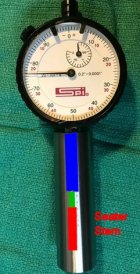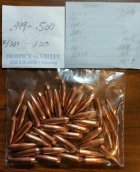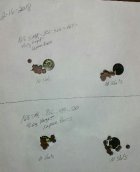Ok I’ll ask a dumb question. Has there ever been a seating stem developed that touches the bullet on the ojive instead of up further closer to the tip?
A fellow LR BR shooter, who also shoots SR BR, has developed several tools that many top competitors use.
He makes a comparator that measures the bullet where the seater stem contacts it (seater ogive or SO), and another comparator that measures where the bullet contacts the chamber (chamber ogive or CO). These two places on the bullet are not usually where a typical ogive tool contacts the bullet. He also make a comparator for a caliper that matches the seater stem (SO) tool.
When bullets are sorted by SO and CO, they all seat the same and all have the same distance from the chamber. He also has made an machine (Bullet Genie) that spins bullets and allows them to be sorted into batches that will group together.
This concept has been validated by blind testing in a 200 yd shooting tunnel. Also, when measuring unsorted bullets that have been seated the same with standard ogive tools, you can see that the bullets are not seated as consistently as you thought.
So does this matter on paper at 600 and 1000 yds? It depends.
1. If you are talking unsorted Berger bullets seated at the lands, it will likely make a difference. Berger's are very inconsistent, but when sorted by SO and CO and then spun on the Genie, they are shoot as well as any custom bullet.
2. If your Berger's are BTO sorted and jumping .015 or more, SO/CO sorting doesn't help as much. Sorting with the Bullet Genie will help if you are shooting in very good conditions. In poor conditions it probably won't matter much.
3. If you are using good custom bullets like
@BartsBullets makes (and others), then SO/CO sorting doesn't help as much. The Genie doesn't help as much either unless conditions are very good.
4. If you are not shooting to BR standards, or you are using custom bullets well off the lands (or jammed well in), or are shooting in poor conditions, then much of this sorting won't make much of a difference. In average conditions it will help a little, and in a competition, even a little help is a big plus.
With all that in mind, for LR BR, I sort all the bullets by SO/CO and spin them in the Genie regardless of the brand. This makes sure I have done everything possible to have consistent bullets. For hunting rifles I only sort BTO--that helps find any bullets that are significantly different than the others. This seems to be the best perceive for what I have seen on paper so far.
















